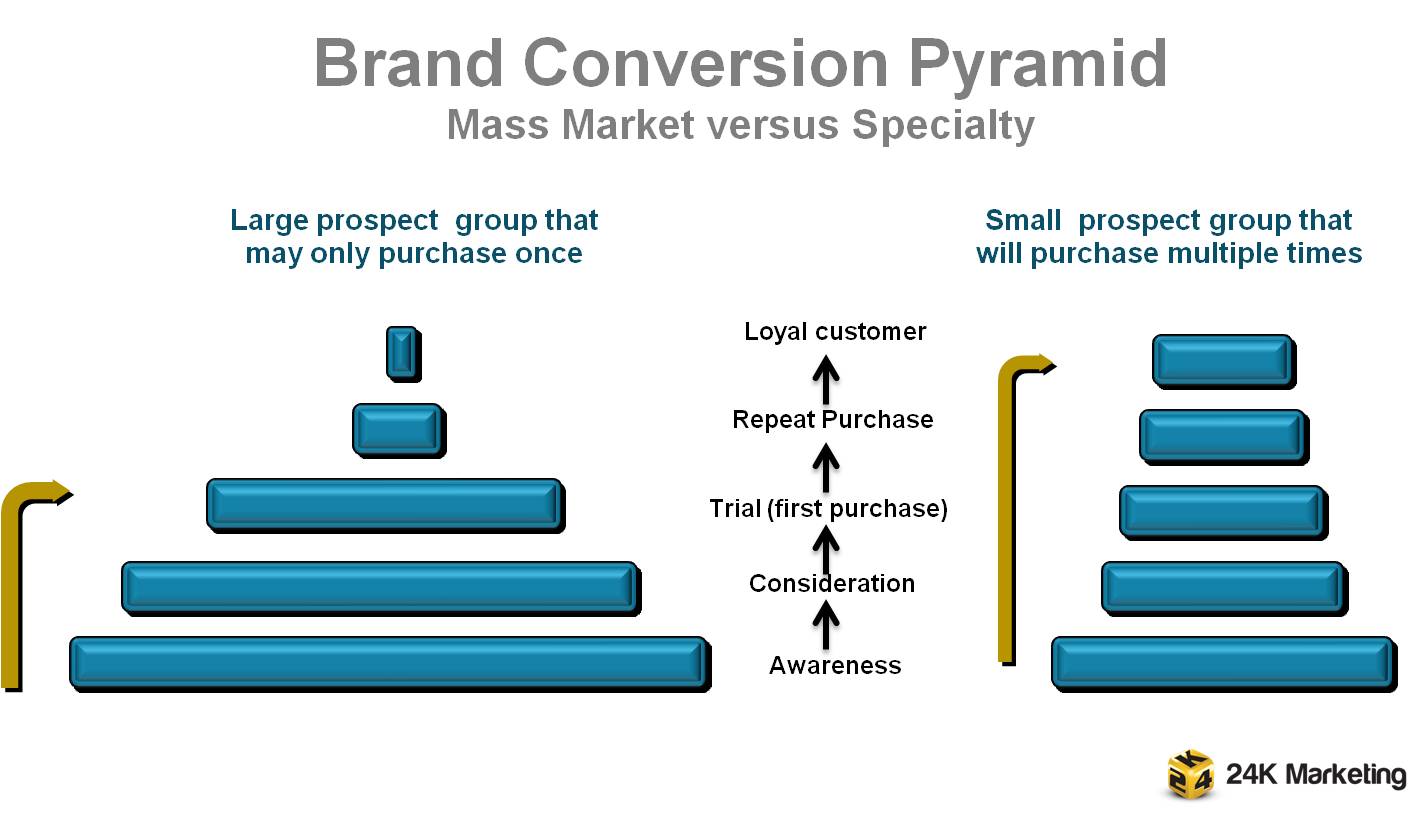Summary
Small businesses should be able to quantify the size of their potential target customers as a first step to building better products and services, establishing a strong branded identity, communicating it effectively and winning in the market versus competitors.
Who Is Your Target?
Many business owners identify a relatively large prospect group as potential customers in the hopes that more prospects means more customers. This can be a good strategy, but let me give you an example of where this may not work. As a hobby musician and guitar enthusiast, I have always enjoyed playing, buying, and selling guitars. I have been doing this most of my life, with the only end result of playing in a few local pubs and having a lot of fun. This is purely a hobby — just like golf, softball, fishing or other activities that occupy one’s time and energy outside of work. I appreciate the art and design of a great guitar. I am not a novice in this area and price would never really be a factor if it were at the expense of getting a great sound. Guitars in my collection are worth well over $1,000 each. My wife thinks this is all lunacy and we don’t discuss my purchases very often.
However, there is a larger group of beginner guitar players who will eagerly pay a couple of hundred dollars to equip themselves with the tools to one day be a rock and roll idol. Relatively few of these beginners will continue on with this hobby or ever purchase another instrument. For a guitar manufacturer, these two business models have obvious differences – the size of the target, their needs, and the awareness of the brands that satisfy these needs.
The Brand Conversion Pyramid
The Brand Conversion Pyramid is a tool that allows marketers to focus their efforts on pinpointing the most important point in the purchase decision process for prospective customer and consumers. Mass marketed products and services must gain broad awareness and multiple one-time purchases for their model to work, while specialized businesses must focus marketing efforts on catering to a smaller group and focusing on building loyalty.
What are Three Steps to Measuring and Increasing Awareness for Your Business?
Step one – identify and determine the size of the target group
Your prospective customers have certain defining attributes like location, gender, age, or the way they think about their needs (psychographics is the fancy word for this). Remember my guitar example and how my needs are different than those of a beginner. If you have trouble identifying this area, think about some of your best customers now and make a list of what sets them apart from people who may not need your service. Quantify the number of prospective customers. It is important to have some data to support this but come up with a number, even if it is only an estimate.
Step two – determine how many of these potential prospects are aware your brand and the solution you provide
The second exercise is to answer how many of these potential customers have knowledge of any services (yours or others) in the market. How many of these prospects have ever heard of your business name and remember it? A simple survey among a small set of people in your target group (not current customers) would provide plenty of information for this step.
Step three – communicate your uniqueness
1. Define a single unique benefit you provide your customer. Make your total offering stand for something different than others that the customer may consider.
2. Develop an on-line presence (website), that can be found by your customer. This is the most important awareness component of many plans. Use a professional to build this unless you are very comfortable in web design. Make sure that it contains content so that the site is easily found through search engine marketing.
3. Develop an activation/communication idea that has “legs”.
4. Develop each leg into an event that integrates PR, media, social media and traditional communication
Then measure the amount of awareness that builds from your ideas and continuously revise these approaches. Do not abandon them after only a couple of tries. Awareness builds over time and with consistent effort.



[…] the first stage, managers at different levels in the local government. In the second stage, the target group will need to be more specific depending on the municipalities’ different developmental […]